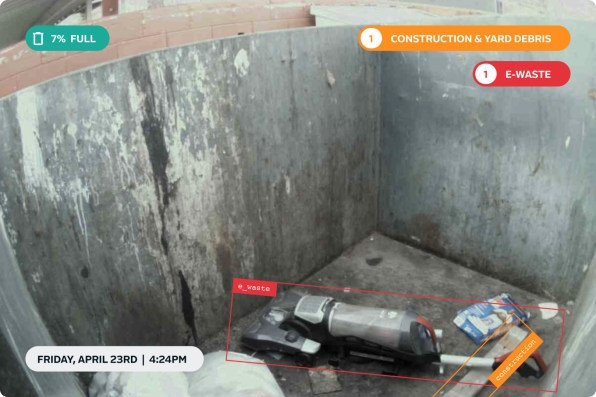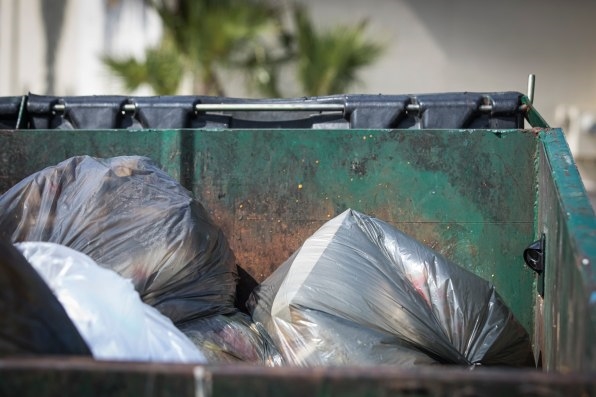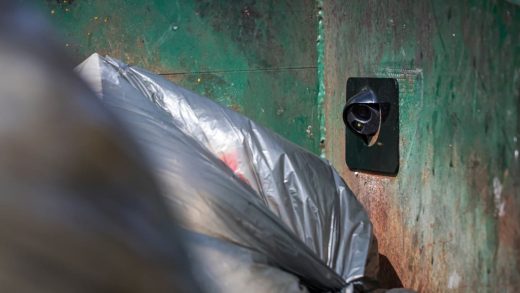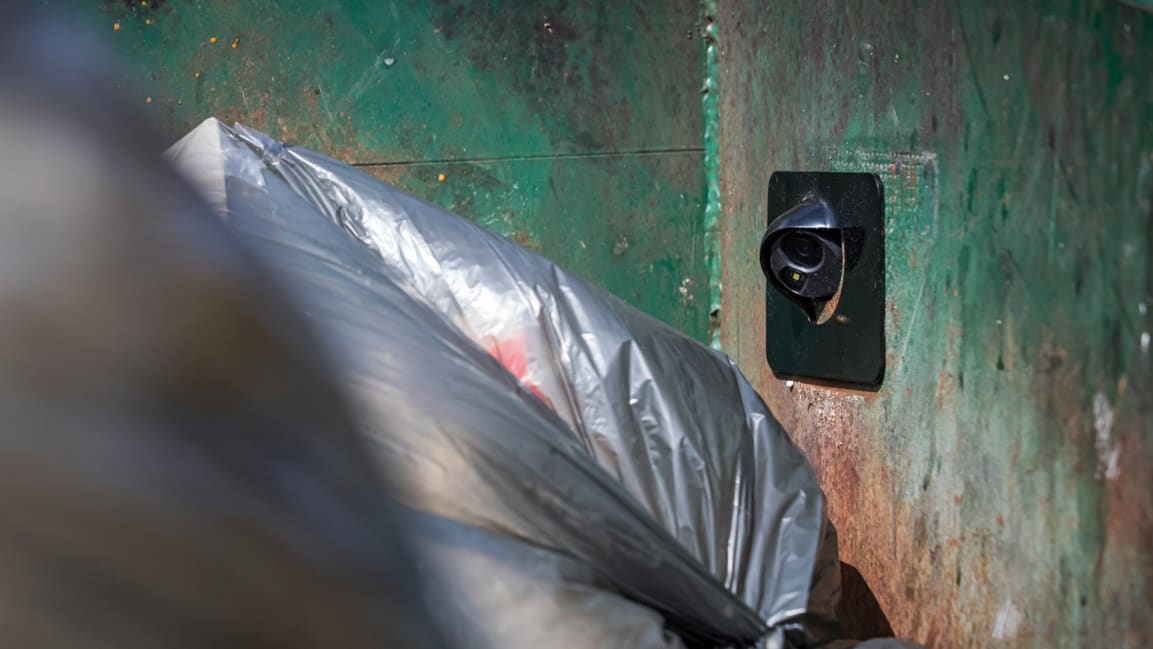These AI-powered dumpsters will help cities treat waste like a utility
In Miami, smart cameras pointed at city dumpsters will take pictures multiple times a day, analyzing not only how quickly those dumpsters fill with waste, but also what types of refuse is being thrown in them. The idea is to meter waste use just like water or electricity or any other utility. In doing so, the city and the company behind the technology say this could improve recycling rates, reduce the carbon emissions associated with trash-hauling trucks, and save the city money on its waste management services.
On most buildings, a meter measures how much electricity, water, or gas is being used, and utilities then charge for that amount. But waste management doesn’t work that way. “It’s all based on estimates,” says Jason Gates, CEO of Compology, the software company behind the waste-metering tech that has partnered with the city of Miami. (Compology has also partnered with multiple businesses, including McDonald’s and ADT Security, and has done pilot programs in other cities; this partnership with Miami is the first that has the intention to be rolled out citywide, Gates says.)

Those estimates can lead to systems where trucks come to empty dumpsters three times a week, even if they’re not actually full. There’s also little to no communication with the people throwing out their trash about their behaviors. If there’s continuous contamination, like non-recyclable items tossed into the plastic recycling bin, there’s often no way to correct that behavior after the fact.
This is what those smart cameras aim to do. Positioned inside dumpsters, Compology’s cameras will take pictures three to five times a day, and then upload them to the cloud. The company uses artificial intelligence to determine three things from those images: how full the dumpsters are, when the dumpsters are being serviced, and an analysis on what types of waste are going into the bins. For the Miami partnership, Compology will install its smart cameras in 40 dumpsters to start, located at municipal buildings, police and fire stations, and parks (including Marlins Park), with the intention of scaling to thousands of dumpsters across the city in the future.

“The cost savings is really generated from this industry-standard concept of ‘right sizing,’ which means adjusting the service schedules to meet the actual waste output from a building,” Gates says. Historically, that’s been done manually; Compology automates this process. When service schedules are adjusted—often reduced, Compology has found—that can save money. Compology says that on average, it reduces the amount businesses and cities spend on collection services by between 30% and 40%. Compology says it’s saved McDonalds $3,321 per individual dumpster per year, just by correcting its waste-service schedule. In the case of the city partnership, the cost savings would also be taxpayer savings.
Less frequent waste service also means fewer miles driven to empty those dumpsters, saving CO2 emissions, and reducing traffic and noise pollution (garbage trucks are notoriously loud). “For the city of Miami, we’re already seeing in the data that they’re going to be able to cut out tens of thousands of garbage truck miles per year by correcting their service schedules,” Gates says. “That’s tons and tons of carbon the city is reducing [in] its footprint, and it’s also a quality of life thing. Think about how often traffic jams are caused by people getting stuck behind garbage trucks.”
Analyzing the contents of dumpsters can also improve recycling rates because it can deliver education back to each building about their specific trash-tossing behavior. Cameras will be in any bin on site, including landfill garbage, recycling, and, if they have it, organic collection. If Compology sees one building tossing lots of cardboard in with the regular trash, they can go back to those in that building and suggest they get a paper-recycling container, which maybe they didn’t have on-site previously. The tech can also ID items like thin film plastic bags, which often can’t be recycled. Compology says this targeted education can reduce contamination by upwards of 80%.
This helps, Gates says, because there’s usually a disconnect between people and their trash. “Most people aren’t translating what they buy into what they’re throwing out into what collection services they need,” he says. “We help them put all those pieces together.”
Cities across the country have begun programs where residents or companies pay based on how much waste they throw away. These “pay-as-you-throw” programs are another kind of waste metering, and that’s where Gates sees the industry heading. “The current structure of the industry is all on set collection schedules and keeping a fixed price per month. We wanted to start by slotting into the way the industry currently operates because that’s a much easier transition,” he says. “But the next evolution we see is being able to have variable pricing based on how much you’re actually throwing out, and, I would say, variable pricing based on how well you actually recycle.”
(38)



